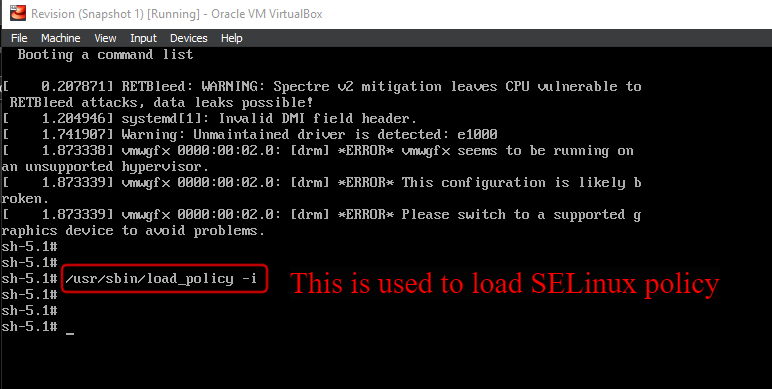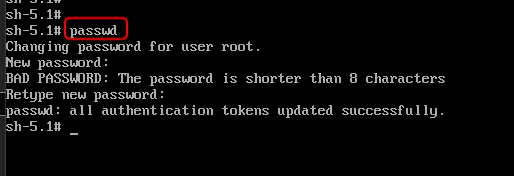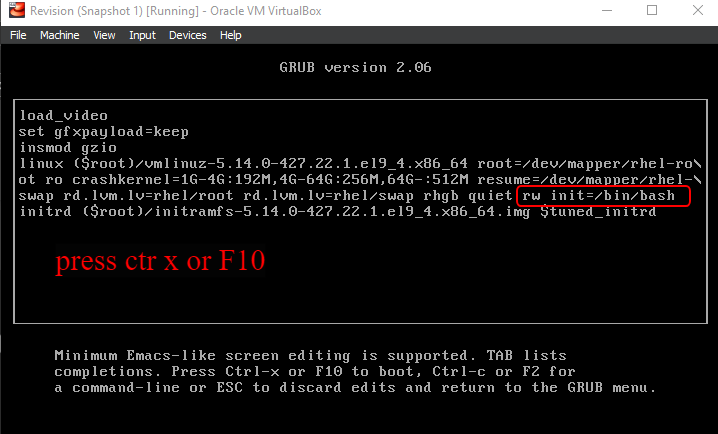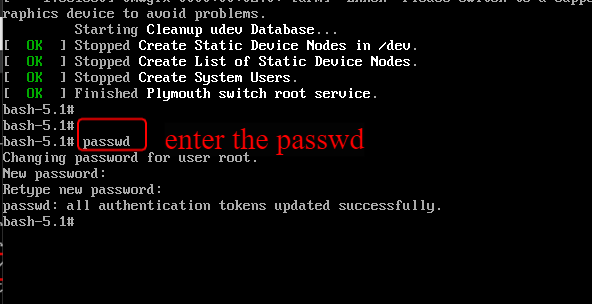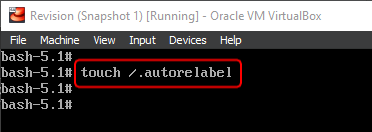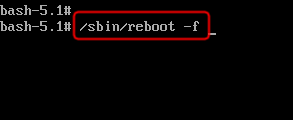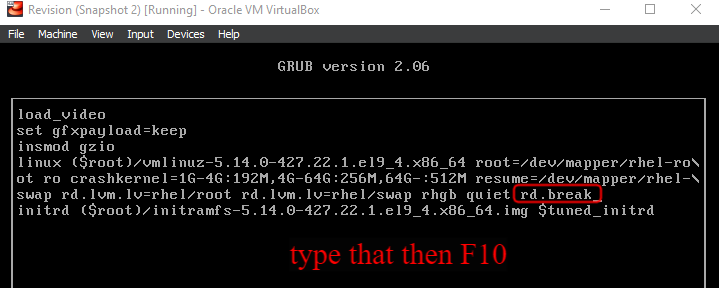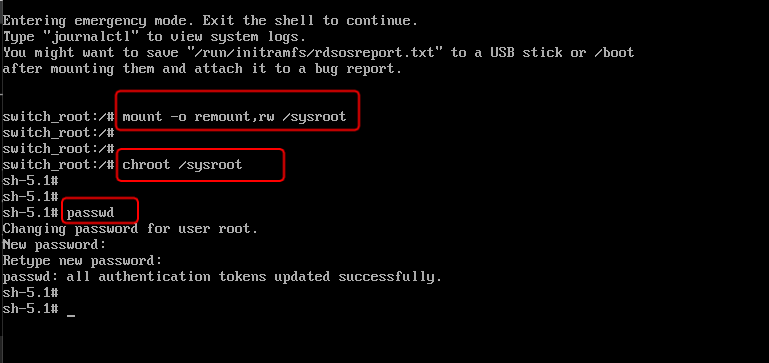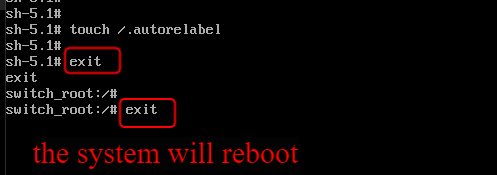How to Reset the Root Password on Linux (Safely and Easily)
Introduction When you lose your root password, it can feel like being locked out of your own digital home. Don't worry—I'm here to guide you through the most practical methods to reset your root password safely. We'll cover multiple approaches, and I'll highlight real IT and business scenarios where each method shines! Important First Step: Before trying any of these methods, take a snapshot or backup of your system. If anything goes wrong, you’ll be grateful you did! Here's a helpful video that shows you how: How to take a snapshot on Oracle VM. Index • Method 1: Quick Edit at Boot (Easy Mode) • Method 2: Remount Filesystem as Read/Write • Method 3: Use the End Key Trick • Method 4: SELinux Considerations Method 1: Quick Edit at Boot (Easy Mode) Steps: 1.Reboot your system. 2.As soon as it starts booting, press e to edit the boot parameters. 3.Find the line starting with linux or linux16. 4.At the end of the line, add the following: init=/bin/bash 5.Press Ctrl + X to boot. 6.You'll now have root access in single-user mode. 7.Set a new root password with: passwd 8.Reboot the system. Use Case: • IT Admins needing a fast recovery during scheduled maintenance. • Business: Quick password resets with minimal downtime in non-production environments. Method 2: Remount Filesystem as Read/Write Steps: 1.Follow the same steps as Method 1 to enter edit mode and boot into /bin/bash. 2.Once you land in the shell, remount the filesystem with write permissions: mount -o remount,rw / 3.Then change the root password: Passwd 4.Finally, reboot the system. Use Case: • IT Professionals recovering production systems. • Business: Essential for critical servers where the filesystem is initially in read-only mode to prevent accidental corruption. Method 3: Use the End Key Trick Steps: 1.On boot, press e. 2.Use the End key to jump directly to the end of the kernel line. 3.Add: rd.break 4.Press Ctrl + X to continue booting. 5.At the switch_root prompt: 6.mount -o remount,rw /sysroot 7.chroot /sysroot 8.passwd 9.touch /.autorelabel 10.exit and exit again Use Case: • Advanced Users who need a deeper recovery without compromising SELinux labeling. • Business: Helps ensure compliance on secure systems where SELinux contexts must remain intact. Method 4: SELinux Considerations. If SELinux is enforcing, resetting the password could lock you out after reboot. Here's how to deal with that: Important Tips: • If SELinux is set to permissive, you're good! No additional steps needed. • If it's enforcing, you must trigger a relabel: touch /.autorelabel Why does this matter? When SELinux is in enforcing mode, it checks file security contexts very strictly. Resetting the password without proper relabeling could deny root access even after setting a new password. Use Case: • SysAdmins in highly regulated industries (finance, healthcare). • Business: Ensures compliance with strict security policies and prevents post-reset access issues. Summary Resetting your Linux root password isn't as scary as it sounds - if you follow the right process. Always back up your system first, and pick the method that best suits your environment and urgency. Whether you're managing a personal project or a critical enterprise server, mastering these recovery tricks is a must-have skill in your admin toolkit. Stay safe, stay backed up, and happy hacking! Connect with me on LinkedIn Stay tuned for more upcoming content! #30DaysLinuxChallenge #RedHatEnterpriseLinux #CloudWhistler #CloudEngineer #Linux #DevOps #RedHat #OpenSource #CloudComputing #Automation #CloudEngineer #SysAdmin #ITSecurity #TechTips #BusinessIT #Leadership

Introduction
When you lose your root password, it can feel like being locked out of your own digital home. Don't worry—I'm here to guide you through the most practical methods to reset your root password safely. We'll cover multiple approaches, and I'll highlight real IT and business scenarios where each method shines!
Important First Step: Before trying any of these methods, take a snapshot or backup of your system. If anything goes wrong, you’ll be grateful you did! Here's a helpful video that shows you how: How to take a snapshot on Oracle VM.
Index
• Method 1: Quick Edit at Boot (Easy Mode)
• Method 2: Remount Filesystem as Read/Write
• Method 3: Use the End Key Trick
• Method 4: SELinux Considerations
Method 1: Quick Edit at Boot (Easy Mode)
Steps:

1.Reboot your system.
2.As soon as it starts booting, press e to edit the boot parameters.
3.Find the line starting with linux or linux16.
4.At the end of the line, add the following:
init=/bin/bash
5.Press Ctrl + X to boot.
6.You'll now have root access in single-user mode.
7.Set a new root password with:
passwd
8.Reboot the system.
Use Case:
• IT Admins needing a fast recovery during scheduled maintenance.
• Business: Quick password resets with minimal downtime in non-production environments.
Method 2: Remount Filesystem as Read/Write

Steps:
1.Follow the same steps as Method 1 to enter edit mode and boot into /bin/bash.
2.Once you land in the shell, remount the filesystem with write permissions:
mount -o remount,rw /
3.Then change the root password:
Passwd
4.Finally, reboot the system.
Use Case:
• IT Professionals recovering production systems.
• Business: Essential for critical servers where the filesystem is initially in read-only mode to prevent accidental corruption.
Method 3: Use the End Key Trick
Steps:
1.On boot, press e.
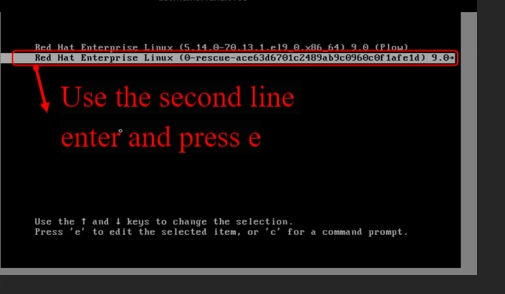
2.Use the End key to jump directly to the end of the kernel line.
3.Add:
rd.break
4.Press Ctrl + X to continue booting.
5.At the switch_root prompt:
6.mount -o remount,rw /sysroot
7.chroot /sysroot
8.passwd
9.touch /.autorelabel
10.exit and
exit again
Use Case:
• Advanced Users who need a deeper recovery without compromising SELinux labeling.
• Business: Helps ensure compliance on secure systems where SELinux contexts must remain intact.
Method 4: SELinux Considerations.
If SELinux is enforcing, resetting the password could lock you out after reboot. Here's how to deal with that:
Important Tips:
• If SELinux is set to permissive, you're good! No additional steps needed.
• If it's enforcing, you must trigger a relabel:
touch /.autorelabel
Why does this matter? When SELinux is in enforcing mode, it checks file security contexts very strictly. Resetting the password without proper relabeling could deny root access even after setting a new password.
Use Case:
• SysAdmins in highly regulated industries (finance, healthcare).
• Business: Ensures compliance with strict security policies and prevents post-reset access issues.
Summary
Resetting your Linux root password isn't as scary as it sounds - if you follow the right process. Always back up your system first, and pick the method that best suits your environment and urgency. Whether you're managing a personal project or a critical enterprise server, mastering these recovery tricks is a must-have skill in your admin toolkit.
Stay safe, stay backed up, and happy hacking!
Connect with me on LinkedIn
Stay tuned for more upcoming content!
#30DaysLinuxChallenge #RedHatEnterpriseLinux
#CloudWhistler #CloudEngineer #Linux
#DevOps #RedHat #OpenSource
#CloudComputing #Automation
#CloudEngineer #SysAdmin #ITSecurity #TechTips #BusinessIT #Leadership



































































































































































![[The AI Show Episode 143]: ChatGPT Revenue Surge, New AGI Timelines, Amazon’s AI Agent, Claude for Education, Model Context Protocol & LLMs Pass the Turing Test](https://www.marketingaiinstitute.com/hubfs/ep%20143%20cover.png)






























































































































![[DEALS] Koofr Cloud Storage: Lifetime Subscription (1TB) (80% off) & Other Deals Up To 98% Off – Offers End Soon!](https://www.javacodegeeks.com/wp-content/uploads/2012/12/jcg-logo.jpg)










































































































































_roibu_Alamy.jpg?width=1280&auto=webp&quality=80&disable=upscale#)


.webp?#)













































































































![M4 MacBook Air Drops to Just $849 - Act Fast! [Lowest Price Ever]](https://www.iclarified.com/images/news/97140/97140/97140-640.jpg)
![Apple Smart Glasses Not Close to Being Ready as Meta Targets 2025 [Gurman]](https://www.iclarified.com/images/news/97139/97139/97139-640.jpg)
![iPadOS 19 May Introduce Menu Bar, iOS 19 to Support External Displays [Rumor]](https://www.iclarified.com/images/news/97137/97137/97137-640.jpg)
































































































